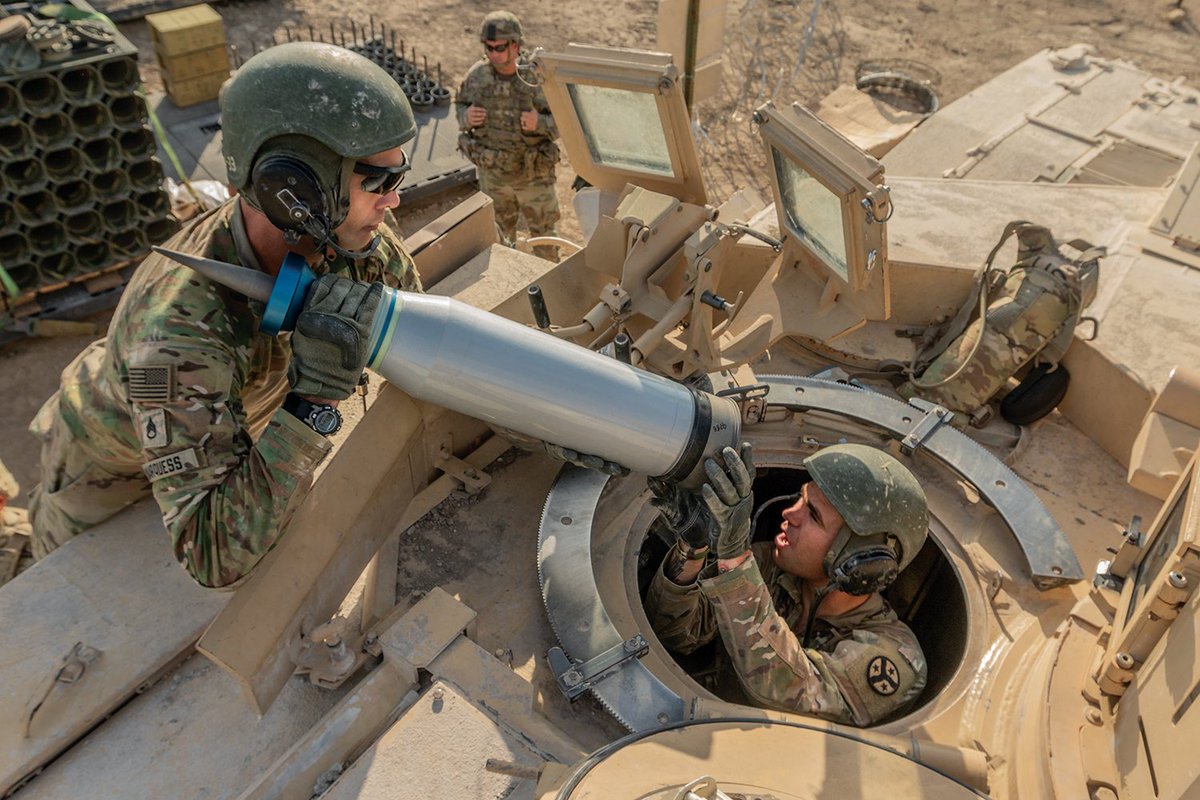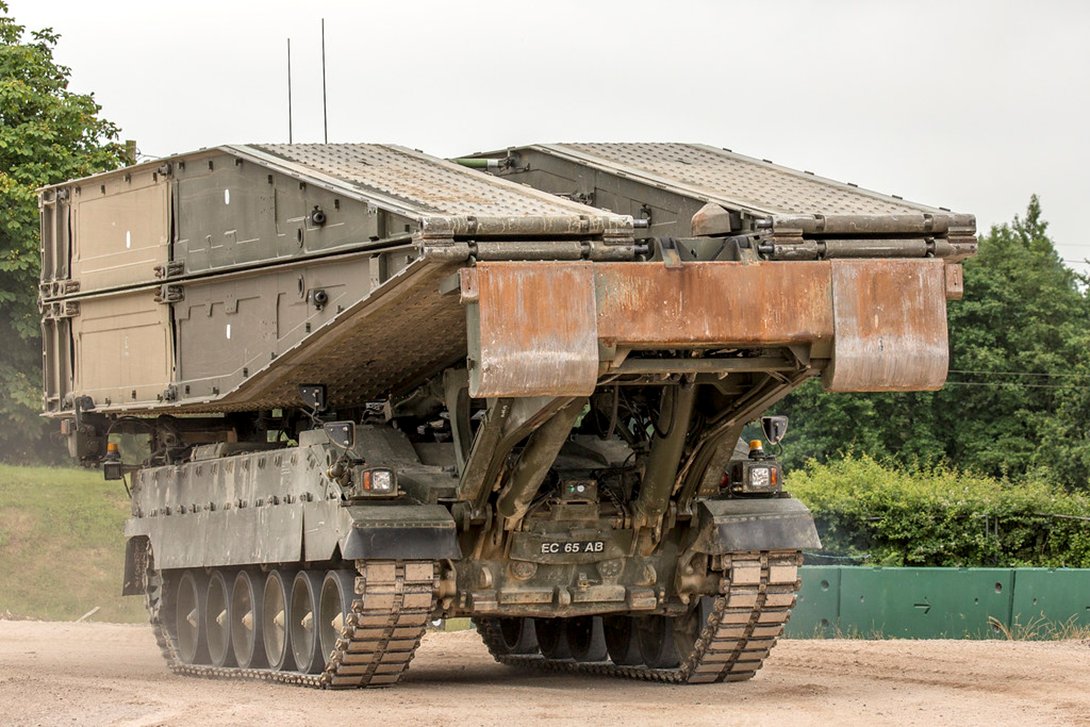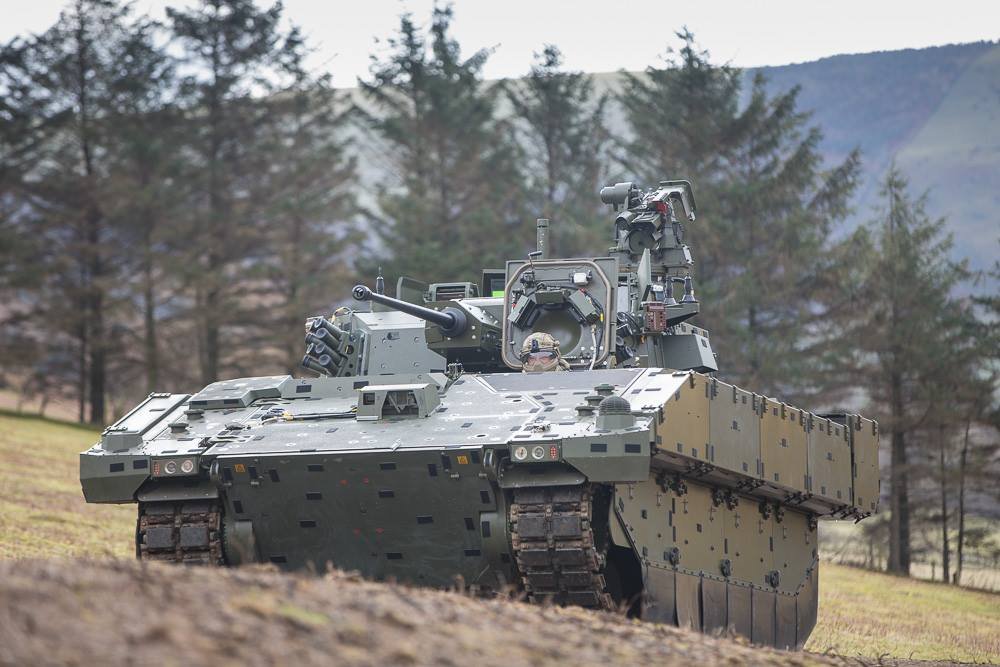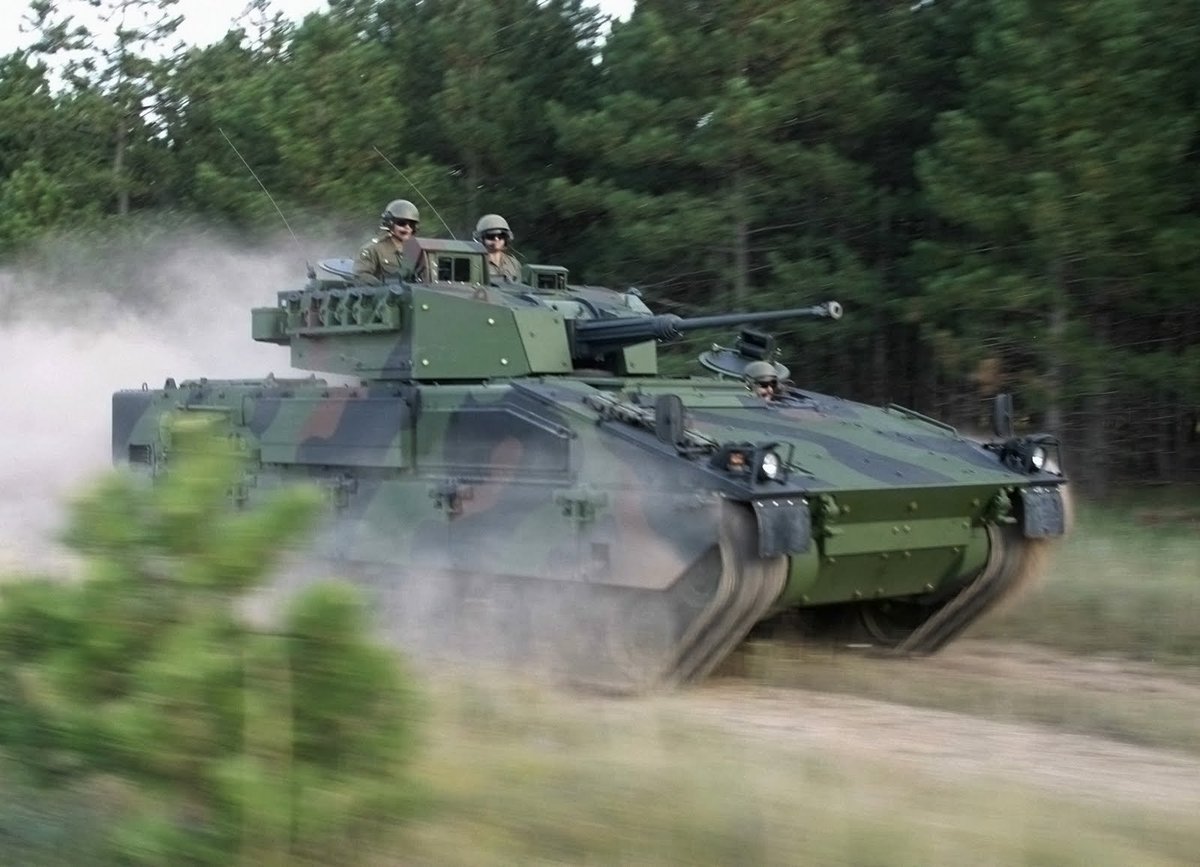1/n If 130 and/or 140 are to be the future calibre for the next generation of MBTs, the means of handling the new rounds need some thought. Some rambling thoughts in the form of a mini thread. 

2/n The 10 mm difference in calibre between 120 and 130 mm has quite a marked impact on the overall size of the round, potentially much more than you might expect. Pictured here the Rheinmetall 130 next to a conventional 120 round. 

3/n 140 is another order of magnitude. Left image the Nexter 140 as mounted to Leclerc for trials in the past few years, again compared to conventional 120 round. Right image a British 140/120 comparison. 



4/n This size issue is a major driver for Nexter's ASCALON, which is a cased telescoped 140 to limit size increase whilst trying to get the performance gains of a larger calibre. Here the ASCALON 140 next to a 120, showing its more akin to a 130 than the normal 140 rounds. 

5/n The point of all this is that 130 and 140 rounds are really big, and very heavy. They are beyond safety limits for a one person lift without mechanical assists, and they are too long to practically handle in the manner a 120 is normally stored and loaded within a turret
6/n Which is why any tank running 120/130 will be autoloaded - we all accept that. But thats not the only time rounds are handled - they need to be fed into the magazine in the first place, ideally quite quickly to minimise time in vulnerable supply points.
Options include:
Options include:

7/n (1) Exoskeletons. Tanks have a lot of power available, even just on APU. A tethered or rechargeable exoskeleton, stored on the vehicle, would be rather handy to allow single person ammunition handling to continue. 

8/n Most trials so far have been a little lighter, focusing on reducing strain for repetitive overhead commercial work, but systems that can lift up to 100kg exist. As they get bulkier it could be necessary to store them with the reload vehicle rather than the tank. 





9/n (2) Robots. Reload vehicle could bring with it UGVs for remote control or autonomous resupply of the tank. Autoloaders are loaded externally under normal circumstances, so the vehicles can pick up rounds direct from transport pallets and load into the magazine for you. 





10/n (3) Automated reload vehicles. Artillery systems have looked at these for a long time, recognising that rapid movement of heavy ammunition is hard by hand. Plenty in service too across the M109 and K9 users. 







11/n Tanks have never really had much interest in these, but the 130/140 dynamic forces the hand somewhat. Perhaps worth revisiting the US Army's Future Armor Rearm System (FARS) concept, which sought to field an automated reload vehicle for the M1 Abrams. 



12/n FARS was a tracked reload vehicle that docks with the bustle and reloads under armour, with the objective to "...increase safety, reduce the size of armor support crews, and increase the battlefield availability of armored fighting vehicles". 

13/n Whilst not tanks, the XM2002 resupply vehicle (RSV) for the Crusader howitzer was a fully automated resupply vehicle that docked under armour and transferred ammunition (and fuel, which is one to think about) automatically with the required crew being simple a driver. 

14/n (4) Swappable magazines. Given 130/140 is really being targeted at next gen, and regardless what we do we need to look at mechanical assistance, why not look at fully swappable magazines, a la MLRS? Park up, swap for a loaded magazine, drive away.
15/n A few ideas for thought. Also interested in any other novel or disruptive approaches from the twittersphere. In any case, need to remain cognisant that handling these rounds won't be simple and needs careful thought alongside the exciting videos and stats. 

• • •
Missing some Tweet in this thread? You can try to
force a refresh































